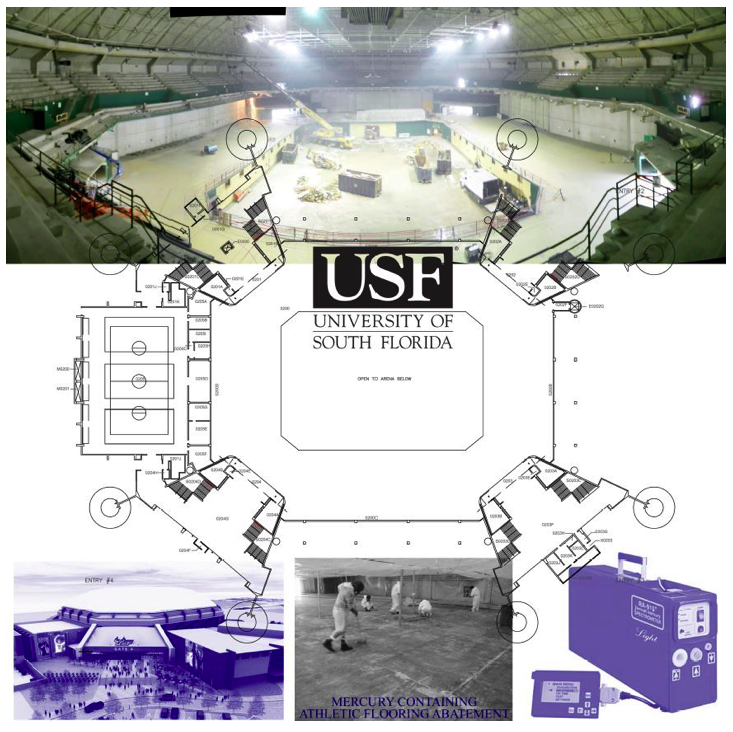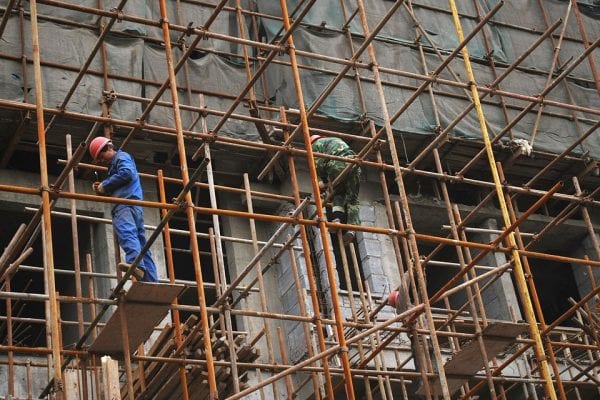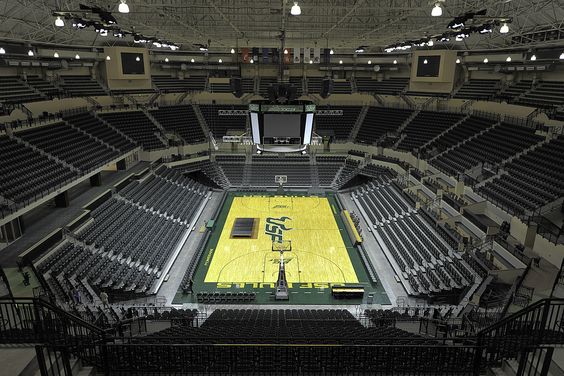Athletic flooring installed between 1960 and 1980 often contains mercury that may pose a health risk during renovation activities. Before undertaking athletic facility updates, it’s important for facility managers to understand the history, risks and responsibilities related to mercury in gym floors.
History of Mercury in Gym Floors
In the 1960s, 3M introduced a gym flooring material called Tartan that was touted as an improvement over old wood floors for gymnasiums as well as outdoor track and field facilities. Other manufacturers followed 3M to develop similar products.
Those products, which were produced from the 1960s through the 1980s, used a mixture of liquid polymers applied to the floor surface. Mercury was used in the polymer mixture as a catalyst to produce the final solid rubber-like flooring material.
Risks of Mercury in Gym Floors
Exposure to mercury through inhalation at high levels may lead to brain and kidney damage. Children are more susceptible to mercury exposure than adults.
In most cases, ambient air quality risks associated with the mercury flooring in buildings where it is installed has already been mitigated by either “capping” the material and/or increasing fresh air ventilation to decrease mercury vapor concentrations. However, when workers disturb the material for disposal, it can off-gas hazardous levels of mercury, posing a health risk to workers, occupants, and the environment.
Responsibilities of Facility Owners and Managers
When planning a renovation project, it is the building management’s responsibility to ensure that any potentially mercury-containing floors and surfaces are tested and mitigated to protect the personnel performing the removal, the future occupants of the space, and the environment at large.
Athletic flooring installed between 1960 and 1980 requires a professional assessment to determine the presence and locations of mercury. If mercury is found to be present in the athletic flooring or other materials, a mitigation plan must be put in place prior to renovation. Mitigation and abatement plans should cover worker protection measures, containment, material and substrate handling, protection of adjacent areas, environmental protection, storage and disposal, as well as clearance criteria for the project.
In our work at public universities and other facilities, we’ve discovered that each facility and mercury-containing material possesses unique characteristics, which must be evaluated on a case-by-case basis. Mercury mitigation strategies must be custom-designed for each case. The initial abatement protocol should be refined based on removal test cases conducted using various types of removal practices on the material, residue and the impacted concrete substrate.
As an example, in April 2015, our mercury abatement team led the effort to remove mercury from The University of Florida’s O’Connell Center. Our involvement included testing, assessments, abatement design, and removal oversight. Our plans called for enclosure of the interior of the arena, with sealed doors and posted warning signs. Ventilation systems were installed to remove mercury vapors from the work area, and continuous air monitoring was performed to ensure the health and safety of the workers and building occupants. All affected materials were removed, containerized, and labeled for appropriate disposal.
For more help on mercury flooring testing and mitigation, please reach out today. Our environmental engineering experts will be happy to answer your questions and guide you to your next steps.





